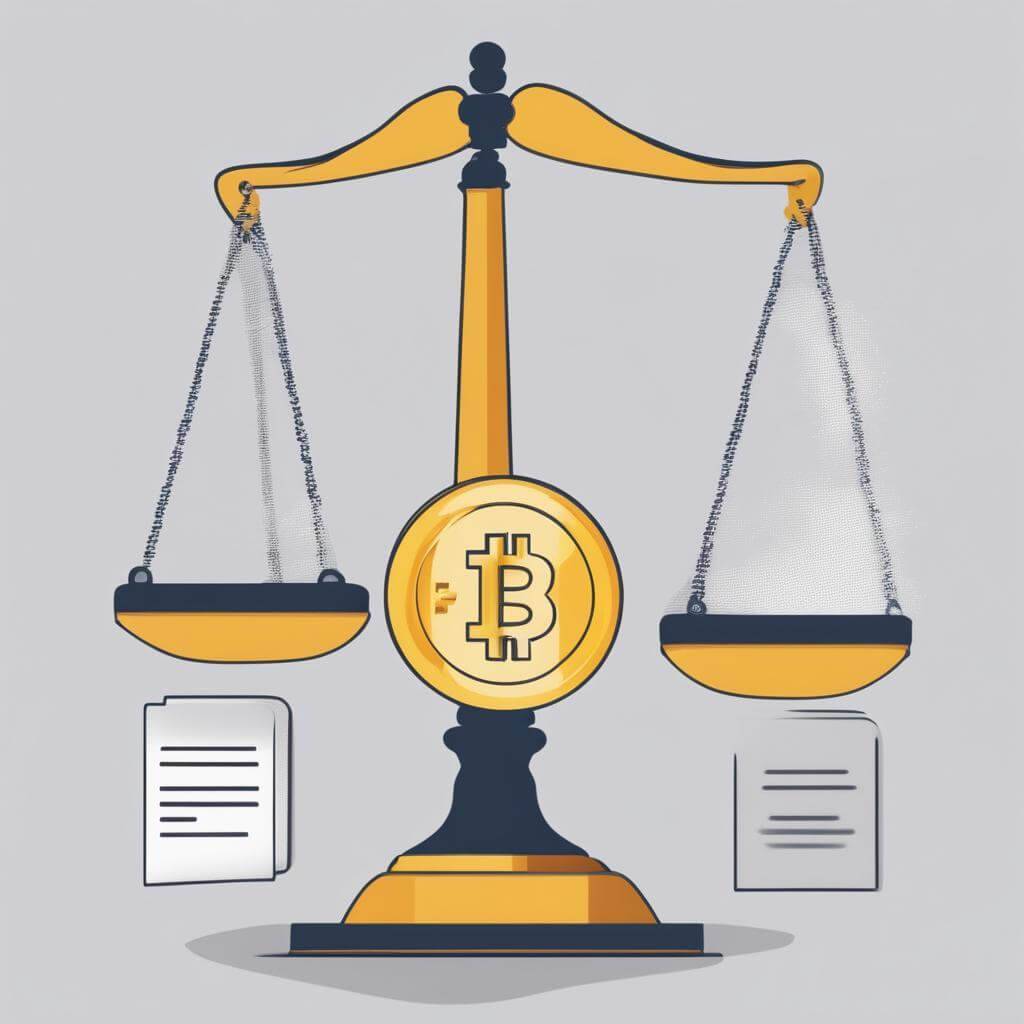Learn how to navigate the regulatory landscape in the fast-growing DeFi space with our comprehensive guide. Understand key regulations and compliance considerations to make informed decisions and safeguard your operations.
In “The Ultimate DeFi Regulatory Compliance Guide: Navigating the Regulatory Landscape in the DeFi Space,” this comprehensive guide targets individuals seeking expert guidance on regulatory compliance within the fast-growing and dynamic realm of decentralized finance, commonly known as DeFi. With the DeFi industry continuing to gain momentum, it is crucial for participants to understand and navigate the ever-evolving regulatory landscape. This guide provides a thorough overview of the key regulations and compliance considerations specific to the DeFi space, empowering individuals to make informed decisions and safeguard their operations within this rapidly changing environment.
The Importance of Regulatory Compliance in DeFi
The decentralized finance (DeFi) space has gained significant attention and adoption in recent years, offering innovative solutions and opportunities for financial inclusion. However, as the DeFi ecosystem continues to grow and evolve, it is crucial to address the importance of regulatory compliance to ensure its long-term sustainability and protect participants’ interests. Regulatory compliance in DeFi refers to the adherence to legal and regulatory obligations set by various governing bodies, such as the Securities and Exchange Commission (SEC), Commodity Futures Trading Commission (CFTC), Financial Action Task Force (FATF), and other relevant regulatory bodies. This article aims to provide a comprehensive guide to understanding the regulatory landscape, identifying the benefits of regulatory compliance, and navigating the challenges associated with regulatory compliance in the DeFi space.
Understanding the Regulatory Landscape
To effectively navigate regulatory compliance in DeFi, it is essential to have a solid understanding of the regulatory landscape. Various regulatory bodies and frameworks play a significant role in shaping and overseeing the DeFi ecosystem. Familiarizing yourself with these key regulatory bodies and frameworks will enable you to meet compliance requirements and operate within legal boundaries.
Securities and Exchange Commission (SEC)
The Securities and Exchange Commission (SEC) is a prominent regulatory body in the United States responsible for enforcing federal securities laws. Although DeFi platforms typically operate in a decentralized manner, certain activities, such as token offerings or initial coin offerings (ICOs), may still fall within the SEC’s regulatory purview. It is essential for DeFi projects to assess whether their activities qualify as securities and comply with applicable regulations to avoid legal consequences.
Commodity Futures Trading Commission (CFTC)
The Commodity Futures Trading Commission (CFTC) is another regulatory body in the United States that oversees the derivatives and commodities markets. Given that DeFi platforms often facilitate trading or other activities related to cryptocurrencies and digital assets, they may potentially fall under the CFTC’s jurisdiction. Compliance with relevant regulations, such as the Commodity Exchange Act, is crucial for DeFi platforms and projects to ensure regulatory compliance.
Financial Action Task Force (FATF)
The Financial Action Task Force (FATF) is an international organization that sets standards and promotes effective implementation of measures to combat money laundering and terrorist financing. DeFi platforms need to implement robust Anti-Money Laundering (AML) and Know Your Customer (KYC) practices to comply with the FATF’s guidelines and prevent illicit activities in their ecosystem.
International Organization of Securities Commissions (IOSCO)
The International Organization of Securities Commissions (IOSCO) is an association of securities regulators worldwide. IOSCO plays a crucial role in setting international standards for securities regulation and investor protection. DeFi projects should be aware of IOSCO’s principles and guidelines to ensure compliance with global regulatory standards and promote market integrity.
Financial Conduct Authority (FCA)
The Financial Conduct Authority (FCA) is the regulatory body responsible for overseeing financial markets in the United Kingdom. DeFi projects operating within or targeting the UK market must comply with the FCA’s regulations to ensure consumer protection and maintain market integrity.
European Securities and Markets Authority (ESMA)
The European Securities and Markets Authority (ESMA) is an independent EU authority responsible for promoting investor protection, stable financial markets, and financial stability. DeFi projects operating within the European Union must comply with ESMA’s regulations to ensure compliance with EU laws and regulations.
Basel Committee on Banking Supervision (BCBS)
The Basel Committee on Banking Supervision (BCBS) is an international forum comprising central banks and banking supervisory authorities. Although not directly applicable to DeFi platforms, understanding the BCBS’s standards and guidelines can provide insights into risk management, capital adequacy, and other aspects of the banking sector that may indirectly impact DeFi operations.
Other Relevant Regulatory Bodies
Besides the aforementioned regulatory bodies, there may be other national and international regulatory bodies with jurisdiction over certain aspects of the DeFi ecosystem. It is crucial for DeFi projects and participants to identify and comply with the regulations applicable to their jurisdiction to ensure regulatory compliance.
Regulatory Challenges in DeFi
Inherent to the decentralized nature of DeFi is the challenge of striking a balance between decentralization and regulatory oversight. Traditional regulatory frameworks are often designed for centralized entities, making it difficult to apply them directly to decentralized platforms. This presents unique challenges for DeFi projects and participants in terms of compliance and navigating the regulatory landscape. Here are some key regulatory challenges in the DeFi space:
Decentralization vs. Regulatory Oversight
The decentralized nature of DeFi platforms poses a challenge in terms of regulatory oversight. Unlike traditional financial institutions, DeFi platforms often lack a centralized entity to monitor and enforce compliance. This raises questions about which regulatory requirements apply and how they can be effectively enforced in a decentralized environment.
Navigating Jurisdictional Boundaries
DeFi platforms operate globally, crossing jurisdictional boundaries and making it challenging to navigate the diverse regulatory requirements of different countries. Jurisdictional issues can arise when determining which regulations apply, as the same activity may be categorized differently in various jurisdictions. Navigating these boundaries requires careful assessment and proactive compliance efforts.
Dealing with Undefined Regulatory Classifications
The rapidly evolving nature of DeFi has led to regulatory classifications that are often undefined or unclear. Determining whether a DeFi token qualifies as a security or falls under a different regulatory classification can be complex and subject to interpretation. This ambiguity can make it challenging for DeFi projects to navigate compliance requirements and determine the appropriate regulatory regime to follow.
Balancing Innovation and Compliance
DeFi is characterized by continuous innovation and experimentation, driven by developers and entrepreneurs. However, the need for regulatory compliance may sometimes be perceived as a hindrance to innovation. Striking a balance between innovation and compliance is crucial to ensure the sustainable growth of the DeFi ecosystem while maintaining integrity and protecting participants’ interests.
Anti-Money Laundering (AML) and Know Your Customer (KYC) Practices in DeFi
Anti-Money Laundering (AML) and Know Your Customer (KYC) practices are essential components of regulatory compliance that aim to prevent money laundering, terrorist financing, and other illicit activities. While DeFi platforms operate in a decentralized and pseudonymous manner, implementing AML and KYC practices is crucial to maintain market integrity, prevent fraud, and comply with regulatory requirements. Understanding AML and KYC requirements, implementing appropriate practices in DeFi, and addressing privacy considerations and security risks are essential in ensuring regulatory compliance.
Understanding AML and KYC Requirements
AML requirements involve conducting due diligence and implementing measures to detect and prevent money laundering and other financial crimes. KYC requirements, on the other hand, involve verifying the identity of customers to prevent fraud and ensure compliance with legal and regulatory obligations. DeFi platforms must familiarize themselves with the AML and KYC requirements set by regulatory bodies and implement appropriate measures accordingly.
Implementing AML and KYC Practices in DeFi
While DeFi platforms aim to provide financial services in a decentralized manner, it is important to strike a balance between privacy and compliance. Implementing AML and KYC practices can involve identity verification, transaction monitoring, risk assessment, and reporting suspicious activities. DeFi platforms should adopt industry best practices and leverage technology to incorporate AML and KYC measures without compromising privacy and decentralization.
The Role of Decentralized Identifiers (DIDs) in KYC
Decentralized Identifiers (DIDs) have emerged as a solution to verify and manage identities in a decentralized manner. DIDs offer a way to empower individuals to control their own identities while allowing for necessary KYC requirements. By utilizing DIDs, DeFi platforms can enhance privacy, security, and regulatory compliance in identity verification processes.
Privacy Considerations and Security Risks
DeFi platforms need to balance privacy considerations with regulatory compliance, as privacy is a fundamental aspect of the decentralized finance movement. Implementing AML and KYC practices should be done in a way that protects users’ privacy and avoids unnecessary data exposure. Additionally, DeFi platforms need to address security risks associated with storing and transmitting sensitive customer information to ensure data protection.
Smart Contract Audits and Security Measures
Smart contracts are the building blocks of DeFi platforms, powering various functionalities such as lending, trading, and liquidity provision. However, the decentralized nature of smart contracts introduces unique security risks that must be addressed to ensure the integrity and reliability of DeFi platforms. Conducting smart contract audits and implementing appropriate security measures are crucial steps in achieving regulatory compliance and protecting user funds.
Importance of Smart Contract Audits
Smart contract audits are critical to identify vulnerabilities, bugs, or malicious code within the contract’s codebase. Audits help ensure that smart contracts function as intended, provide the expected security guarantees, and comply with regulatory requirements. Auditing smart contracts is essential in mitigating the risk of potential exploits or vulnerabilities that could compromise user funds or expose platforms to legal risks.
Popular Smart Contract Audit Firms
Several specialized firms offer smart contract audit services, providing expertise in evaluating smart contract code for security vulnerabilities. These firms conduct comprehensive audits, including code review, vulnerability identification, and recommendations for improvement. Engaging reputable audit firms can enhance regulatory compliance, strengthen security measures, and instill trust in the DeFi platform.
Implementing Security Measures in DeFi Platforms
In addition to smart contract audits, DeFi platforms should implement robust security measures to minimize the risk of security breaches and protect user funds. These measures may include encryption, multi-factor authentication, segregation of duties, code reviews, and incident response plans. By maintaining a strong security posture, DeFi platforms can mitigate security risks and demonstrate commitment to regulatory compliance.
Considerations for Protecting User Funds
Protecting user funds is a fundamental aspect of regulatory compliance in DeFi. DeFi platforms should implement robust fund management practices, including secure storage of digital assets, regular security audits, and insurance coverage. Adequate custody solutions, such as multi-signature wallets or use of decentralized finance protocols, can enhance user fund protection and reduce the potential for loss or theft.
Regulatory Reporting and Compliance Monitoring
Regulatory reporting and compliance monitoring are crucial aspects of maintaining regulatory compliance in the DeFi space. DeFi platforms must establish mechanisms to ensure adequate record-keeping, report relevant information to regulatory authorities, and monitor compliance with regulatory requirements. Utilizing automated compliance monitoring solutions can streamline these processes and enhance regulatory compliance efforts.
Adequate Record-Keeping and Reporting Obligations
Effective record-keeping is essential for regulatory compliance as it allows for accurate reporting and auditing of financial transactions. DeFi platforms should maintain comprehensive records of customer activities, transactions, and compliance measures taken. Timely and accurate reporting of relevant information to regulatory authorities is crucial in demonstrating transparency and commitment to regulatory obligations.
Automated Compliance Monitoring Solutions
The complex and ever-changing regulatory landscape in DeFi requires robust compliance monitoring solutions. Automated compliance monitoring tools can help DeFi platforms detect and prevent potential compliance breaches, monitor suspicious activities, and generate audit-ready reports. These solutions leverage artificial intelligence and machine learning algorithms to enhance the efficiency and accuracy of compliance monitoring.
Addressing Data Privacy and Protection Issues
In the context of regulatory reporting and compliance monitoring, data privacy and protection are significant considerations. DeFi platforms should ensure that personal and sensitive customer information is securely stored, transmitted, and utilized for regulatory compliance purposes. Implementing data protection measures, such as encryption, access controls, and data anonymization, can help address data privacy concerns and maintain regulatory compliance.
Cross-Border Transactions and Regulatory Compliance
Cross-border transactions are common in the DeFi space, posing unique challenges in terms of regulatory compliance. DeFi platforms need to navigate the diverse regulatory requirements of different countries, establish compliance measures for cross-border transactions, and actively collaborate with international regulatory bodies.
Challenges of Cross-Border Transactions in DeFi
Cross-border transactions in DeFi introduce challenges related to differing regulatory requirements, jurisdictional boundaries, and compliance obligations. Compliance with a specific country’s regulations may not suffice when engaging in cross-border transactions, necessitating a comprehensive understanding of the regulatory frameworks in relevant jurisdictions. Overcoming these challenges requires proactive engagement with regulatory authorities and effective compliance measures tailored to cross-border transactions.
International Regulatory Collaboration Efforts
To address the challenges of cross-border transactions and ensure regulatory compliance, international regulatory collaboration efforts are crucial. Regulatory bodies and organizations worldwide are increasingly recognizing the need to collaborate and share information to combat financial crimes and promote regulatory harmonization. DeFi platforms should actively participate in these collaborative efforts, engage with regulators, and contribute to the development of international compliance standards.
Common Compliance Standards for Cross-Border Transactions
To facilitate regulatory compliance in cross-border transactions, common compliance standards are being developed and adopted. For instance, the FATF’s Travel Rule imposes obligations on Virtual Asset Service Providers (VASPs) to share customer information during cross-border transactions. Compliance with these standards, as well as other applicable regulations, is essential for DeFi platforms to ensure smooth cross-border operations and maintain regulatory compliance.
Insurance and Risk Mitigation in DeFi
Insurance and risk mitigation are vital components of regulatory compliance in DeFi. DeFi platforms and participants are exposed to various risks, such as smart contract vulnerabilities, operational failures, and external economic risks. Understanding the importance of insurance, exploring available insurance options, and establishing risk mitigation strategies are crucial for regulatory compliance and protecting stakeholders’ interests.
Understanding the Importance of Insurance in DeFi
Insurance plays a significant role in DeFi by providing a layer of protection against a wide range of risks. Insurance coverage can compensate for financial losses resulting from smart contract vulnerabilities, platform hacks, or unforeseen events. By having insurance, DeFi platforms can demonstrate their commitment to risk mitigation, enhance participants’ trust, and ensure regulatory compliance.
Available Insurance Options in the DeFi Space
Insurance options tailored specifically for DeFi platforms and participants are emerging in the market. These options include coverage for smart contract risks, hacking incidents, and user fund protection. DeFi projects should explore insurance products offered by reputable providers, assess coverage options, and choose policies that align with their risk tolerance and regulatory compliance requirements.
Assessing Risks and Establishing Risk Mitigation Strategies
Effective risk assessment and mitigation are critical in ensuring regulatory compliance in DeFi. DeFi platforms should conduct comprehensive risk assessments to identify potential vulnerabilities and develop risk mitigation strategies to address them. This may involve implementing robust security measures, diversifying risk exposure, maintaining adequate liquidity, and establishing mechanisms for swift and efficient response to unforeseen events or emergencies.
Navigating DeFi Regulations for DeFi Projects and Startups
Navigating the regulatory requirements of the DeFi space can be challenging for DeFi projects and startups. Compliance with applicable regulations is essential for long-term sustainability, investor trust, and avoidance of legal consequences. Here are some key considerations for DeFi projects and startups when navigating DeFi regulations:
Identifying Regulatory Requirements for DeFi Projects
DeFi projects need to identify and comprehend the regulatory requirements applicable to their specific activities. This involves assessing whether the project qualifies as a security, commodity, or falls under other relevant regulatory classifications. Engaging legal counsel with expertise in DeFi regulations can help navigate this complex landscape and ensure adequate compliance.
Engaging Legal Counsel in Navigating Compliance
Legal counsel with expertise in DeFi regulations can provide valuable guidance and support in navigating compliance obligations. They can help assess the regulatory landscape, interpret relevant laws and guidelines, and ensure compliance with regulatory requirements. Engaging legal counsel early in the project’s development process can facilitate the establishment of appropriate compliance measures and mitigate legal risks.
Structuring DeFi Startups for Regulatory Compliance
Proper structuring of DeFi startups is crucial in ensuring regulatory compliance. Startups should carefully consider the legal entity they establish, jurisdiction selection, corporate governance, and regulatory license requirements. By structuring themselves in a manner that aligns with regulatory requirements, DeFi startups can enhance regulatory compliance efforts and establish a strong foundation for growth.
The Future of Regulatory Compliance in DeFi
As the DeFi space continues to evolve, so too will the regulatory landscape. The future of regulatory compliance in DeFi will be shaped by emerging trends and ongoing efforts to establish comprehensive regulatory frameworks. Here are some key aspects to consider regarding the future of regulatory compliance in DeFi:
Emerging Regulatory Trends
Regulatory trends in the DeFi space are likely to focus on enhancing investor protection, combatting financial crimes, and promoting regulatory harmonization. As DeFi platforms gain prominence, regulatory bodies will likely issue new guidelines and regulations specific to the DeFi ecosystem. Keeping abreast of emerging regulatory trends will be crucial for ensuring ongoing compliance and adapting to regulatory changes.
Potential Regulatory Frameworks for DeFi
Efforts are underway to establish comprehensive regulatory frameworks for the DeFi space. These frameworks may aim to strike a balance between regulatory oversight and fostering innovation in the decentralized finance sector. Regulatory frameworks for DeFi can provide clarity, ensure consumer protection, and facilitate the growth of the DeFi ecosystem within a regulatory compliant framework.
Building a Proactive Compliance Culture
Creating a proactive compliance culture within the DeFi ecosystem will be essential for maintaining regulatory compliance. DeFi projects and participants should prioritize regulatory compliance from the outset, implementing robust compliance measures, conducting regular audits, and staying updated on regulatory developments. By building a proactive compliance culture, the DeFi community can demonstrate its commitment to operating within legal and ethical boundaries.
In conclusion, regulatory compliance is of paramount importance in the DeFi space. Understanding the regulatory landscape, identifying benefits of compliance, and navigating challenges are essential for long-term sustainability and growth. Implementing AML and KYC practices, conducting smart contract audits, establishing compliance monitoring solutions, addressing cross-border transaction challenges, and mitigating risks through insurance are key steps in achieving regulatory compliance. Navigating regulations, engaging legal counsel, and structuring startups appropriately are vital for compliance in the evolving regulatory landscape. The future of regulatory compliance in DeFi will depend on emerging trends, potential regulatory frameworks, and the cultivation of a proactive compliance culture. By prioritizing regulatory compliance, the DeFi ecosystem can thrive within a framework that protects participants’ interests, fosters innovation, and ensures the integrity of the financial system.







































